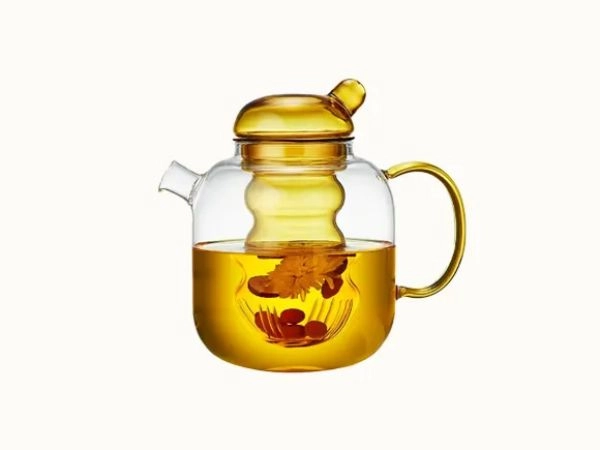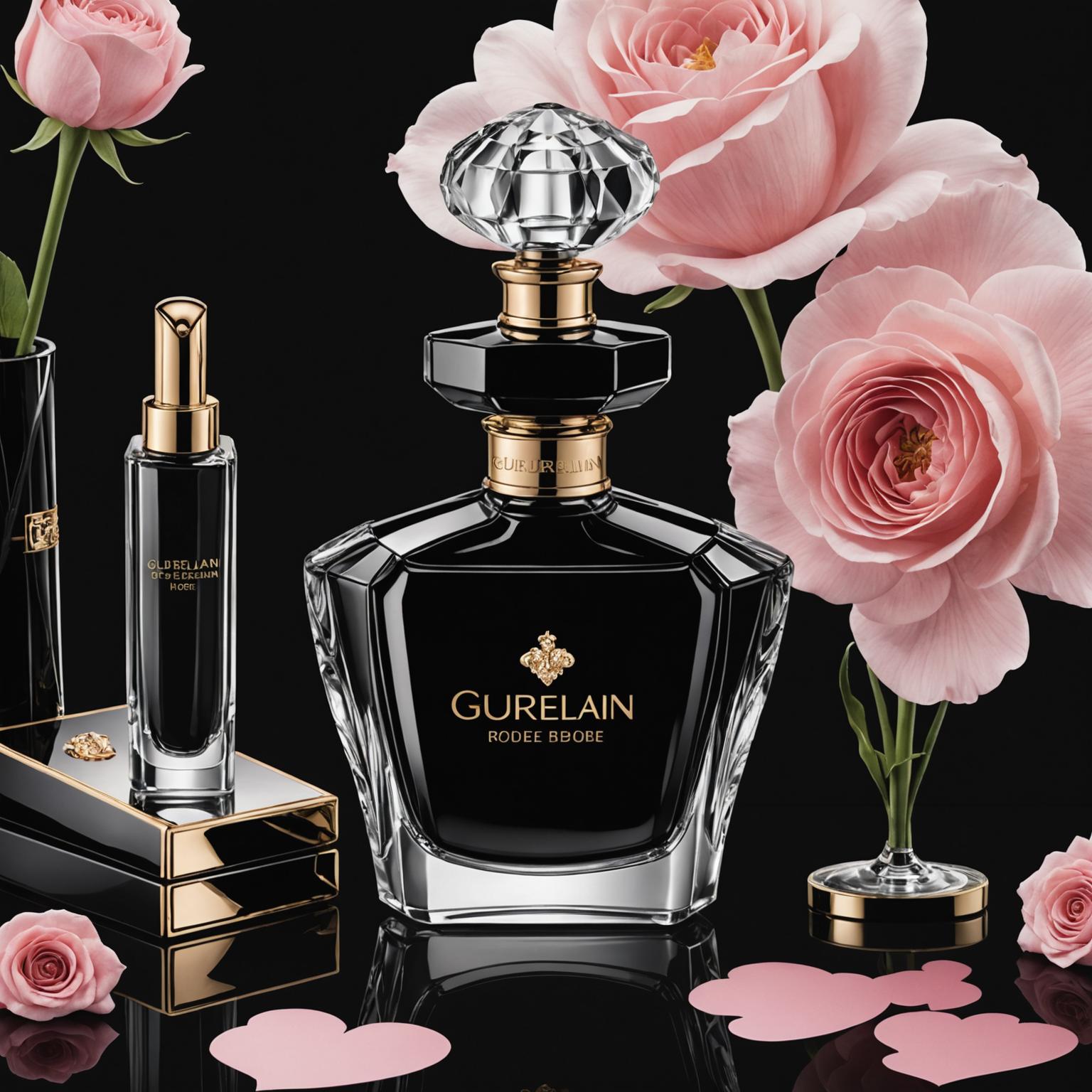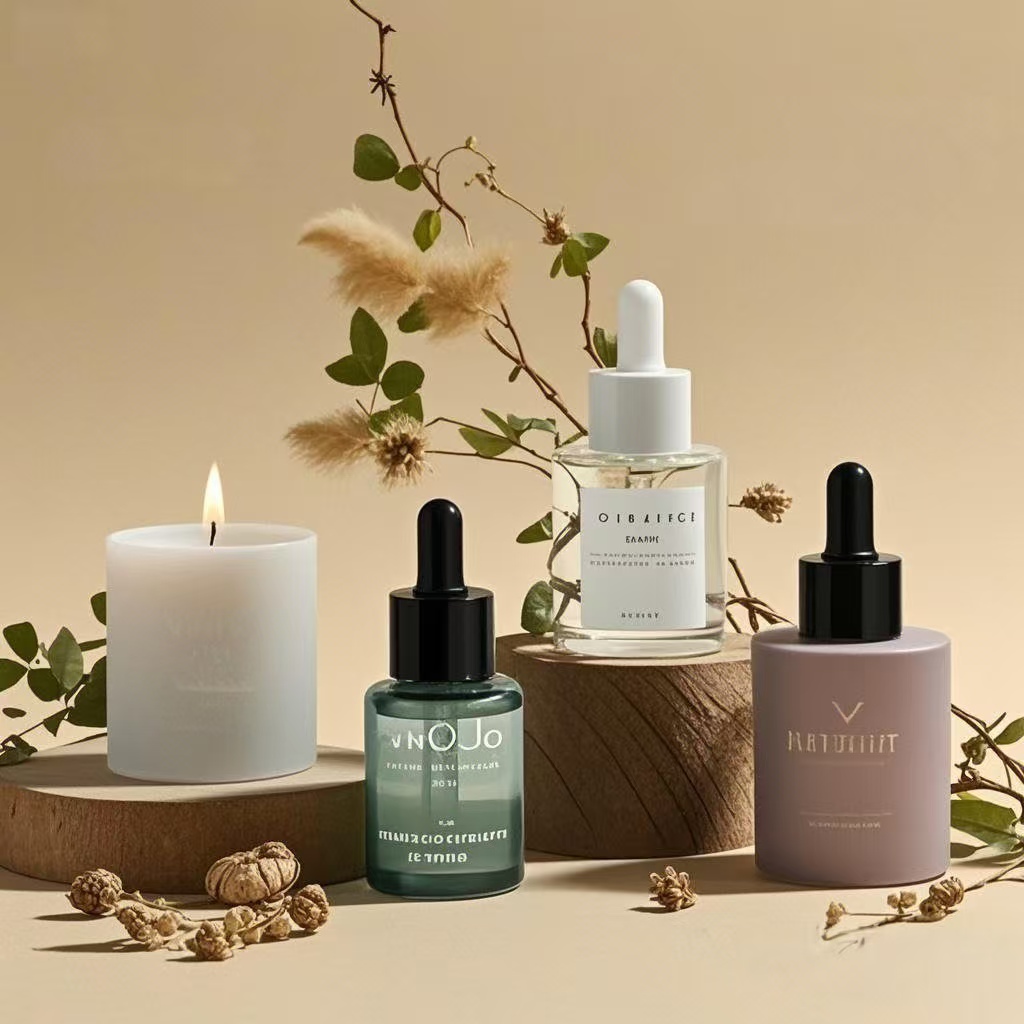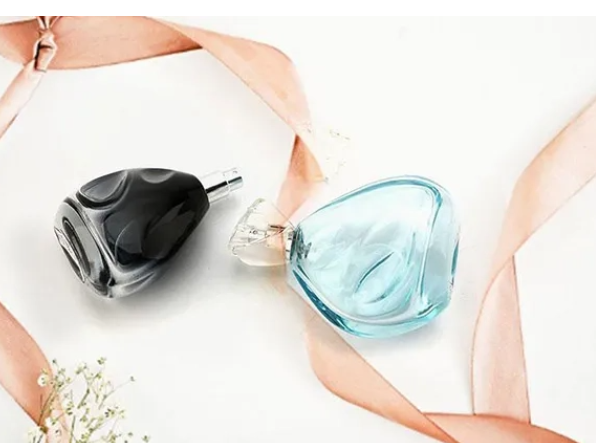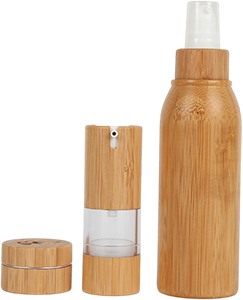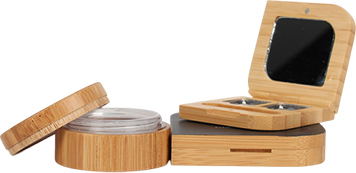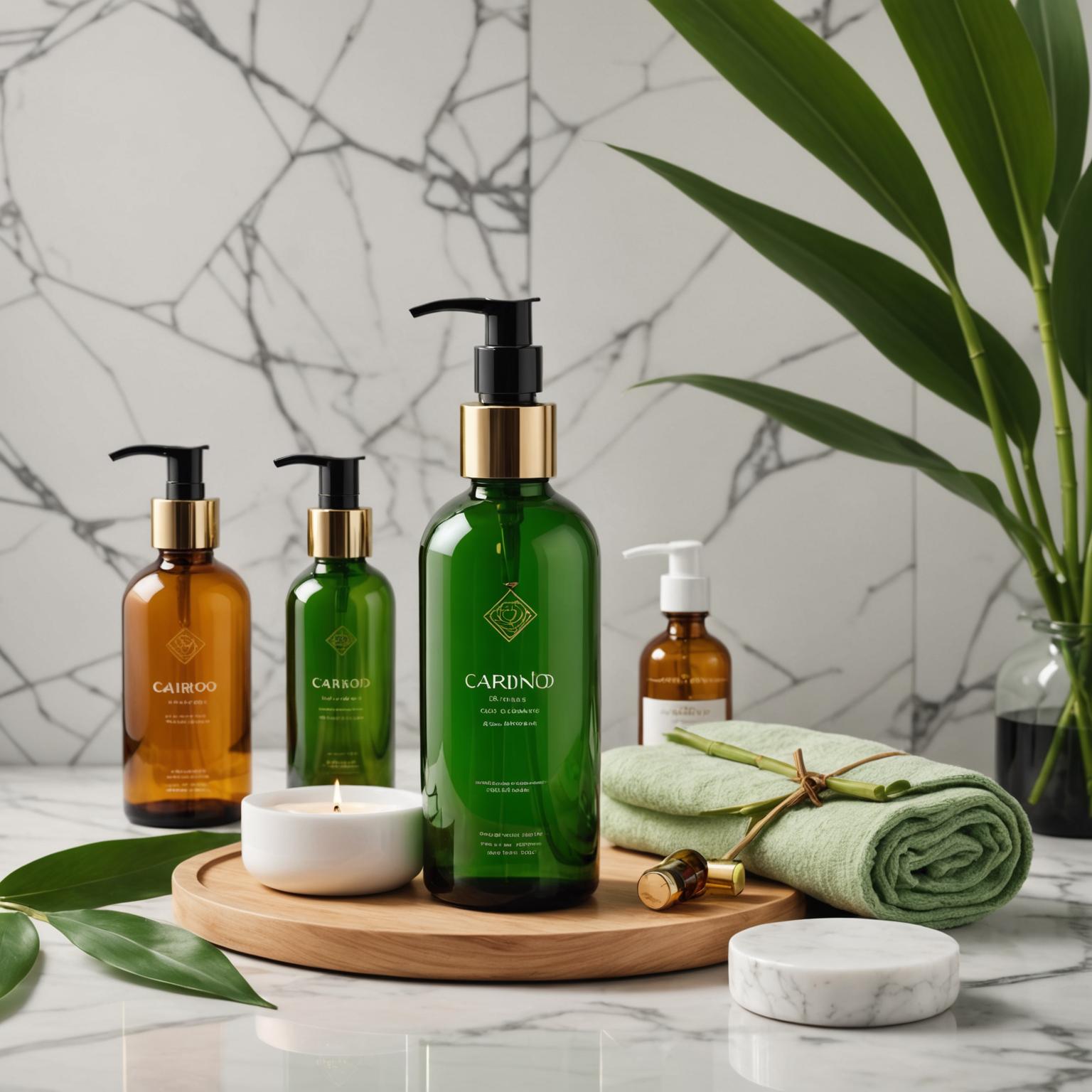For anyone in the essential oil industry, an "empty bottle" is far more than just a container. It needs to block light, prevent evaporation, ensure airtightness, and meet food-grade safety standards. Generic glass bottle suppliers often fail to meet these niche requirements, while a professional empty essential oil bottle supplier addresses your procurement pain points at the source.
1. Quality Control: Meeting Essential Oil Packaging Needs
Professional suppliers design empty essential oil bottles to tackle the volatility and light sensitivity of essential oils. For example:
-
They use borosilicate glass, which resists temperature changes and corrosion—critical for storing potent oils like citrus or eucalyptus.
-
They pair bottles with food-grade silicone seals to prevent leaks and oxidation, a common issue with low-quality caps that can ruin expensive oils.
-
Many offer amber or dark blue glass options to block UV rays, extending the shelf life of light-sensitive oils such as lavender or tea tree.
These details are rarely prioritized by generic suppliers. Overlooking them can lead to oil degradation, customer complaints, and long-term damage to your brand’s credibility.
2. Customization: Aligning with Brand Differentiation
Whether you’re a niche essential oil brand wanting "minimalist frosted bottles with gold foil logos" or a large aromatherapy company needing "multi-size sets (5ml/10ml/15ml)," a professional empty essential oil bottle supplier delivers end-to-end customization. This includes bottle shape design, printing techniques (like screen printing or hot stamping), and accessory matching (droppers, childproof caps, sprayers).
Unlike suppliers that only offer standardized products, this customization helps your products stand out on crowded shelves—whether in physical stores or online marketplaces like Amazon or Etsy.
3. After-Sales Support: Reducing Supply Chain Risks
Essential oil procurement often involves bulk orders. Delays, inconsistent quality, or uncompensated breakages from suppliers can disrupt your production schedule and inventory flow. Professional empty essential oil bottle suppliers have mature quality control systems:
-
They conduct batch sampling to test airtightness and material purity.
-
They include clear terms in contracts, such as "breakage compensation" and "late delivery penalties," to protect your business.
This level of support ensures your supply chain remains stable, even during peak seasons like the holidays.
5 Key Tips for Buying Wholesale Empty Glass Bottles
Once you’ve decided to prioritize quality, wholesale empty glass bottles become a key way to cut costs. However, "low price" doesn’t equal "good value." Rushing to choose the cheapest option or lowest minimum order quantity (MOQ) can lead to bigger losses. These five tips help you balance quality and cost.
1. Match Bottle Sizes to Your Use Case to Avoid Waste
Common empty essential oil bottle sizes include 5ml (sample packs), 10ml (regular retail), 15ml (family-sized), and 30ml (bulk options). Your purchasing needs should align with your sales strategy:
-
If you focus on "essential oil sample sets," 5ml bottles should make up 60% or more of your order.
-
If you sell single essential oils, 10ml bottles will be your core size.
Work with suppliers to adopt "batch wholesale"—many professional vendors allow small initial orders for testing, followed by larger restocks. This prevents overstocking and tying up capital in unused bottles.
2. Prioritize Suppliers with Complete Material Certifications
Empty glass bottles for essential oils come into direct contact with products that may be applied to the skin or inhaled. Safety is non-negotiable. When buying wholesale, ask suppliers for:
-
Domestic markets: Test reports for food-contact glass (compliant with standards like GB 4806.5-2016 in China).
-
International markets: FDA certification (U.S.), CE marking (EU), or LFGB certification (Germany).
Avoid suppliers that can’t provide these documents. A single product recall due to non-compliant materials will cost far more than any upfront savings.
3. Test Airtightness—Critical for Essential Oil Preservation
Essential oils are highly volatile. Poor airtightness leads to evaporation, oxidation, and reduced efficacy. Before placing a wholesale order, request samples and test them with this simple method:
-
Fill the bottle with water (to simulate oil).
-
Tighten the cap and invert the bottle for 24 hours.
-
Check for leaks or moisture seepage around the cap.
Only bottles that pass this test will keep your oils stable during storage and shipping.
4. Calculate Total Costs, Not Just Unit Price
The "cost" of wholesale empty glass bottles includes more than just the bottle itself. Factor in:
-
Accessory costs: Are droppers, caps, or labels included, or do they cost extra?
-
Shipping costs: Does the supplier offer free shipping, or will you pay for courier, freight, or sea transport?
-
Breakage costs: What is the supplier’s guaranteed breakage rate, and will they compensate for excess damage?
For example, Supplier A may charge $0.8 per bottle but exclude accessories and shipping, while Supplier B charges $1 per bottle but includes both. In most cases, Supplier B offers better value.
5. Confirm Lead Times to Align with Production
Lead times for empty glass bottles vary:
-
In-stock orders: Typically ship within 3 days.
-
Custom orders: Can take 15–45 days, depending on complexity.
During peak seasons (e.g., before Black Friday or Christmas), lead times may extend. Clarify timelines upfront and include "late delivery penalties" in your contract to avoid missing sales opportunities.
Essential Oil Bottle Distributors: A Lifeline for Small Brands
For small essential oil brands or startups, partnering directly with an empty essential oil bottle supplier can be challenging—many require MOQs of 5,000+ bottles, but your monthly demand may only be 1,000. This is where essential oil bottle distributors shine.
3 Core Benefits of Working with a Distributor
Compared to factories, distributors offer flexibility and convenience:
-
Lower MOQs: Most distributors have in-stock inventory and accept orders as small as 100 bottles—perfect for testing new products or restocking small batches.
-
Faster shipping: Distributors often have regional warehouses, so orders ship within 1–3 days (far faster than factories’ 15–45-day lead times).
-
Localized support: If you have concentrated orders in a specific region, distributors can offer nearby delivery to reduce shipping costs. They also provide faster after-sales support, such as same-day returns for defective bottles.
Supplier vs. Distributor: Which Is Right for You?
The choice depends on your order volume and needs. Use this table to decide:
| Comparison Factor | Empty Essential Oil Bottle Supplier | Essential Oil Bottle Distributor |
|---|---|---|
| Minimum Order Quantity | High (usually 5,000+ bottles) | Low (100–1,000 bottles) |
| Price | Lower unit cost (bulk discounts) | Slightly higher (includes storage/service fees) |
| Customization | Strong (full bottle/print design) | Weak (mostly in-stock or minor tweaks) |
| Lead Time | Long (15–45 days for custom) | Short (1–3 days for in-stock) |
| Ideal For | Large brands, stable monthly demand (≥5,000 bottles) | Small brands, startups, small-batch restocks (≤3,000 bottles) |
In short: Choose a supplier if you need large, custom orders. Choose a distributor if you need flexibility and speed.
2 Tips for Choosing a Reliable Distributor
Not all distributors are equal. Avoid pitfalls with these steps:
-
Verify source authenticity: Some unethical distributors mix low-quality bottles (e.g., recycled glass with impurities) into their inventory. Ask for proof of their upstream supplier partnerships and material certifications (e.g., FDA, CE).
-
Check inventory freshness: Old inventory may have issues like scratched bottles or degraded silicone seals. Choose distributors that update their stock monthly and specify "latest production batches" in your order.
4-Step Process to Find a Reliable Partner (2025 Update)
Knowing the basics is one thing—putting it into action is another. Follow these steps to find a trustworthy empty essential oil bottle supplier or essential oil bottle distributor in 2025.
Step 1: Clarify Your Procurement Needs
Before searching, answer these five questions to narrow down your options:
-
Core need: Do you need in-stock bottles or custom designs?
-
Order volume: What’s your monthly demand, and how much will you order per batch?
-
Product specs: Which sizes (5ml/10ml/15ml), colors (amber/clear/blue), and accessories (droppers/sprayers) do you need?
-
Quality standards: Do you need international certifications (e.g., FDA for U.S. sales)?
-
Budget: What’s your per-bottle budget (including accessories and shipping)?
Clear needs help you avoid wasting time on suppliers that don’t fit your business.
Step 2: Source Candidates Through 3 High-Efficiency Channels
In 2025, the best ways to find empty essential oil bottle suppliers or distributors are:
-
B2B platforms: Alibaba (for global suppliers), 1688 (for Chinese suppliers), or Thomasnet (for U.S.-based vendors). Prioritize "Gold Suppliers" or "Verified Manufacturers"—these have stricter vetting.
-
Industry trade shows: Events like Sino-Pack (Guangzhou) or the International Aromatherapy & Natural Products Expo (Las Vegas) let you inspect samples in person and negotiate directly.
-
Peer referrals: Ask other essential oil brand owners for recommendations. This is the most trustworthy channel, as you can learn from their past experiences.
Shortlist 3–5 candidates to compare further.
Step 3: Conduct Due Diligence and Sample Testing
Don’t skip this step—it’s how you avoid bad partnerships:
-
Background checks: Review the supplier’s business license (to confirm they sell glass products), certification documents (e.g., FDA), and customer reviews (check platforms like Trustpilot or Alibaba’s feedback section). For factories, ask for a video tour of their production line to verify capacity.
-
Sample testing: Request samples of your desired bottle size and color. Test for:
-
Material quality: No odors, bubbles, or scratches when held up to light.
-
Airtightness: Use the inversion test mentioned earlier.
-
Accessory fit: Ensure droppers dispense smoothly and caps twist on easily.
-
For custom orders, ask for a prototype first to confirm design details.
Step 4: Sign a Detailed Contract to Protect Both Parties
Once you’ve chosen a partner, formalize the agreement with a contract that includes:
-
Product specs: Attach photos of the bottle, accessory list, and material details.
-
Pricing and payment: Unit price, total cost, payment terms (e.g., 30% deposit, 70% before shipping), and invoice type.
-
Delivery: Shipping address, transport method, and delivery date.
-
Quality and after-sales: Guaranteed breakage rate, return process for defective products, and late delivery penalties.
-
Confidentiality: If you have custom designs, include a clause that prohibits the supplier from sharing your designs with third parties.
A clear contract prevents misunderstandings and provides legal protection if issues arise.
FAQ: Solving Common Procurement Questions
1. Can I Negotiate Minimum Order Quantities (MOQs) with Suppliers?
Yes. If you’re a small brand, ask the empty essential oil bottle supplier about "phased cooperation"—for example, promise to place regular monthly orders in exchange for a lower initial MOQ (e.g., from 5,000 to 2,000 bottles). If they refuse, switch to a distributor with lower MOQs.
2. How Do I Tell if Glass Bottle Material Is High-Quality?
Use these quick checks:
-
Transparency: Hold the bottle up to light—no cloudiness, bubbles, or impurities.
-
Sound: Tap the bottle gently—high-quality glass makes a clear, ringing sound; low-quality glass sounds dull.
-
Hardness: Scratch the bottle lightly with a fingernail—no visible marks mean it’s durable.
3. How Big Is the Price Difference Between Suppliers and Distributors?
Suppliers typically offer 10–30% lower unit prices than distributors, but they require larger orders. If your monthly demand is ≤3,000 bottles, a distributor is more cost-effective (you avoid overstocking). If demand is ≥5,000 bottles, a supplier will save you money. For 3,000–5,000 bottles, negotiate "quarterly bulk orders" with a supplier to get a lower price.
Conclusion: Let the Right Bottle Elevate Your Brand
For essential oil brands, empty bottles are more than packaging—they’re part of the customer experience. A high-quality bottle builds trust, while a low-quality one undermines even the best oil. Whether you choose an empty essential oil bottle supplier for bulk custom orders or an essential oil bottle distributor for flexibility, the key is to align their services with your needs: prioritize quality, calculate total costs, and formalize agreements with clear contracts.
In 2025, as the essential oil market becomes more competitive, a streamlined packaging supply chain will be a key differentiator. Use this guide to find a partner that turns "empty bottles" into a strength—one that helps your brand grow, not just survive.
To help you put this guide into action, I can create a 《Empty Essential Oil Bottle Procurement Checklist》—it includes key steps for vetting suppliers, testing samples, and drafting contracts, so you can avoid mistakes and save time. Would you like this checklist?



